-
 bitcoin
bitcoin $122025.899241 USD
-2.12% -
 ethereum
ethereum $4488.068729 USD
-4.11% -
 bnb
bnb $1315.348019 USD
8.65% -
 tether
tether $1.000457 USD
0.03% -
 xrp
xrp $2.875326 USD
-3.69% -
 solana
solana $222.043604 USD
-4.07% -
 usd-coin
usd-coin $0.999682 USD
0.00% -
 dogecoin
dogecoin $0.249887 USD
-5.62% -
 tron
tron $0.337379 USD
-2.59% -
 cardano
cardano $0.827763 USD
-5.06% -
 hyperliquid
hyperliquid $45.774531 USD
-2.43% -
 chainlink
chainlink $22.079309 USD
-5.87% -
 ethena-usde
ethena-usde $1.000156 USD
0.02% -
 sui
sui $3.482566 USD
-3.57% -
 stellar
stellar $0.386982 USD
-4.92%
What is AMM (automated market maker)? How is Uniswap priced?
Uniswap uses the constant product formula to price assets, adjusting token quantities in pools to maintain a constant product, impacting prices based on trade size and pool liquidity.
Apr 11, 2025 at 06:57 pm
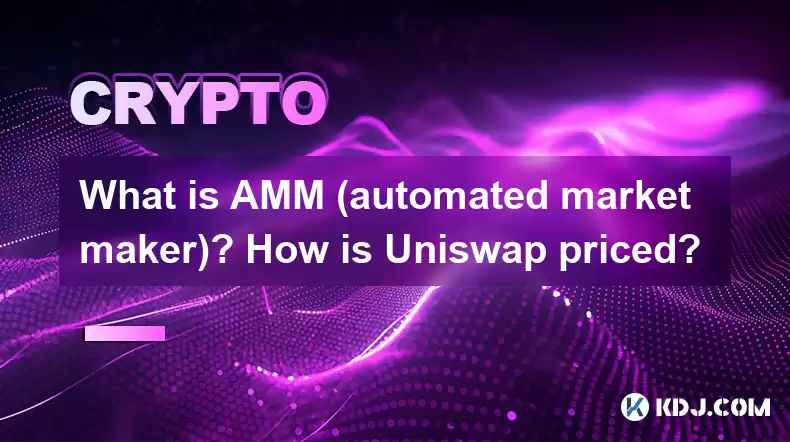
Automated Market Makers (AMMs) are a type of decentralized exchange protocol that use algorithms to price assets instead of traditional order books. The most well-known AMM is Uniswap, which has become a cornerstone of the decentralized finance (DeFi) ecosystem. This article will delve into the mechanics of AMMs and specifically how Uniswap prices its assets.
Understanding AMMs
AMMs operate on the principle of liquidity pools, which are pools of tokens locked in a smart contract. Users can swap tokens within these pools, and the price of the tokens is determined by an algorithm rather than by a centralized entity. The most common algorithm used in AMMs is the constant product formula, which is expressed as x y = k, where x and y represent the quantities of the two tokens in the pool, and k is a constant.
The Constant Product Formula
The constant product formula ensures that the product of the quantities of the two tokens in the pool remains constant after each trade. When a user swaps one token for another, the smart contract adjusts the quantities of the tokens in the pool to maintain the constant k. This adjustment results in a change in the price of the tokens.
For example, if a user wants to swap Token A for Token B, they will deposit Token A into the pool, which increases the quantity of Token A and decreases the quantity of Token B to keep k constant. The new price of Token B in terms of Token A is then determined by the new ratio of the quantities of the two tokens in the pool.
Liquidity Provision in AMMs
Liquidity providers are users who deposit their tokens into the liquidity pools. In return, they receive liquidity provider (LP) tokens, which represent their share of the pool. These LP tokens can be redeemed for the underlying tokens at any time, and liquidity providers earn a portion of the trading fees generated by the pool.
The more liquidity a pool has, the smaller the price impact of trades, making the pool more attractive to traders. However, providing liquidity also comes with risks, such as impermanent loss, which occurs when the price of the tokens in the pool changes significantly.
Uniswap's Pricing Mechanism
Uniswap uses the constant product formula to determine the price of tokens in its pools. When a user wants to swap tokens on Uniswap, they interact with the smart contract, which calculates the new price based on the quantities of the tokens in the pool.
To illustrate how Uniswap prices its assets, consider a pool with two tokens, Token A and Token B. If the pool initially contains 100 Token A and 100 Token B, the constant k is 100 100 = 10,000. If a user wants to swap 10 Token A for Token B, the new quantities in the pool will be 110 Token A and y Token B, where 110 * y = 10,000. Solving for y, we get y = 10,000 / 110 ≈ 90.91 Token B.
The new price of Token B in terms of Token A is then 110 / 90.91 ≈ 1.21. This means that the user will receive approximately 9.09 Token B for their 10 Token A, and the price of Token B has increased relative to Token A.
Slippage and Price Impact
Slippage refers to the difference between the expected price of a trade and the actual price at which the trade is executed. In AMMs like Uniswap, slippage is influenced by the size of the trade relative to the liquidity of the pool. Larger trades in less liquid pools will result in higher slippage.
To mitigate slippage, users can set a slippage tolerance when executing trades on Uniswap. If the actual price of the trade exceeds the slippage tolerance, the transaction will be rejected. This feature allows users to control the maximum price impact they are willing to accept.
Trading Fees and Liquidity Incentives
Trading fees on Uniswap are typically set at 0.3% of the trade value. These fees are distributed to liquidity providers proportional to their share of the pool. The fees serve as an incentive for users to provide liquidity, as they can earn passive income from the trading activity in the pool.
In addition to trading fees, some AMMs, including Uniswap, have introduced liquidity mining programs. These programs reward liquidity providers with additional tokens, further incentivizing them to contribute to the liquidity of the pools.
Frequently Asked Questions
Q: How does Uniswap handle large trades that could significantly impact the pool's price?A: Uniswap allows users to set a slippage tolerance to manage the price impact of large trades. If the trade's price impact exceeds the set slippage tolerance, the transaction will be rejected, protecting users from excessive price slippage.
Q: Can I provide liquidity to multiple pools on Uniswap?A: Yes, users can provide liquidity to multiple pools on Uniswap. Each pool will have its own LP tokens, and the liquidity provider's rewards will be calculated separately for each pool based on the trading fees generated.
Q: What happens to the liquidity in a pool if one of the tokens becomes worthless?A: If one of the tokens in a pool becomes worthless, the value of the pool will be significantly impacted. Liquidity providers may experience impermanent loss, and the pool's overall value will decrease. However, they can still redeem their LP tokens for the remaining tokens in the pool.
Q: How does Uniswap ensure the security of its smart contracts?A: Uniswap's smart contracts are audited by reputable third-party firms to ensure their security. Additionally, the code is open-source, allowing the community to review and identify potential vulnerabilities. Any discovered issues are addressed through updates to the smart contracts.
Disclaimer:info@kdj.com
The information provided is not trading advice. kdj.com does not assume any responsibility for any investments made based on the information provided in this article. Cryptocurrencies are highly volatile and it is highly recommended that you invest with caution after thorough research!
If you believe that the content used on this website infringes your copyright, please contact us immediately (info@kdj.com) and we will delete it promptly.
- BlockDAG, DOGE, HYPE Sponsorship: Crypto Trends Shaping 2025
- 2025-10-01 00:25:13
- Deutsche Börse and Circle: A StableCoin Adoption Powerhouse in Europe
- 2025-10-01 00:25:13
- BlockDAG's Presale Buzz: Is It the Crypto to Watch in October 2025?
- 2025-10-01 00:30:13
- Bitcoin, Crypto, and IQ: When Genius Meets Digital Gold?
- 2025-10-01 00:30:13
- Stablecoins, American Innovation, and Wallet Tokens: The Next Frontier
- 2025-10-01 00:35:12
- NBU, Coins, and Crypto in Ukraine: A New Yorker's Take
- 2025-10-01 00:45:14
Related knowledge

How to track DeFi activity on a block explorer
Sep 04,2025 at 05:36pm
Bitcoin's Role in Decentralized Finance1. Bitcoin remains the cornerstone of the cryptocurrency ecosystem, serving as both a store of value and a benc...
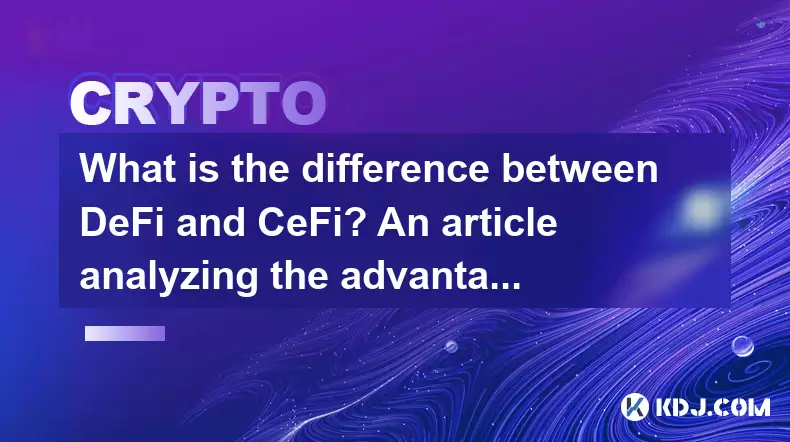
What is the difference between DeFi and CeFi? An article analyzing the advantages and disadvantages of both
Jun 13,2025 at 03:57am
Understanding the Foundations of DeFi and CeFiTo fully grasp the difference between DeFi (Decentralized Finance) and CeFi (Centralized Finance), it’s ...
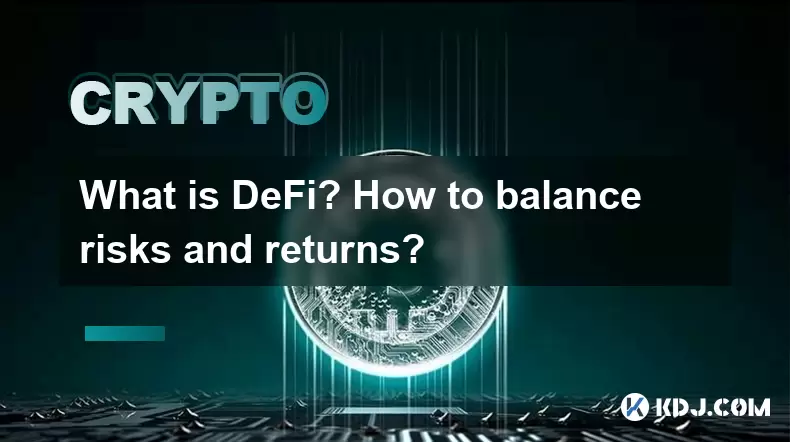
What is DeFi? How to balance risks and returns?
May 31,2025 at 12:22pm
What is DeFi? How to Balance Risks and Returns? Decentralized Finance, commonly known as DeFi, represents a revolutionary shift in the financial ecosy...
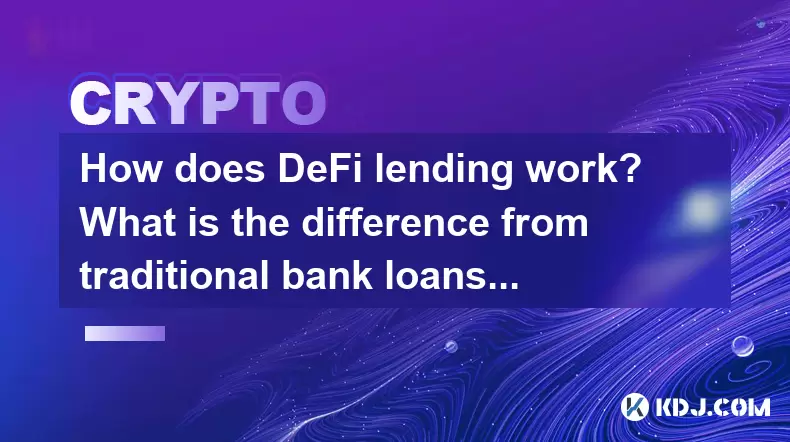
How does DeFi lending work? What is the difference from traditional bank loans?
May 29,2025 at 05:36pm
Introduction to DeFi LendingDeFi lending, or decentralized finance lending, represents a revolutionary shift in the way borrowing and lending are cond...
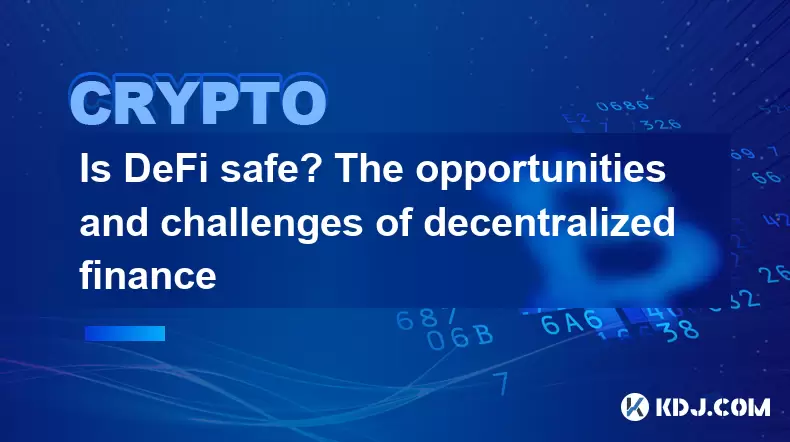
Is DeFi safe? The opportunities and challenges of decentralized finance
May 27,2025 at 02:28pm
Decentralized Finance, commonly known as DeFi, has revolutionized the financial landscape by offering a range of financial services without the need f...
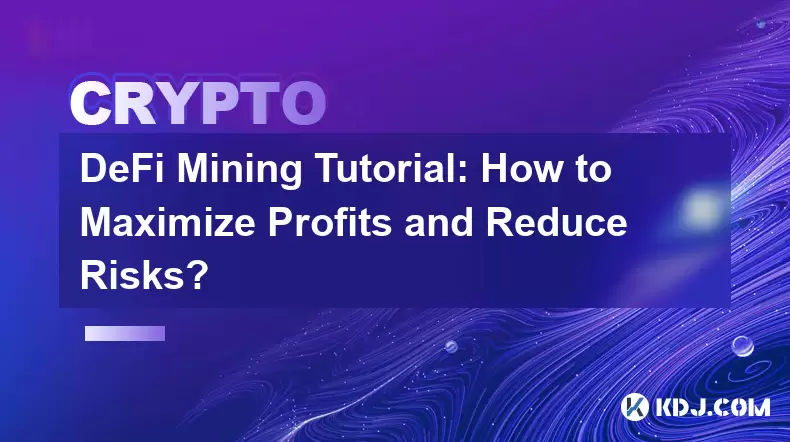
DeFi Mining Tutorial: How to Maximize Profits and Reduce Risks?
May 27,2025 at 07:42am
DeFi, or Decentralized Finance, has opened up a new world of opportunities for crypto enthusiasts looking to maximize their profits through various mi...

How to track DeFi activity on a block explorer
Sep 04,2025 at 05:36pm
Bitcoin's Role in Decentralized Finance1. Bitcoin remains the cornerstone of the cryptocurrency ecosystem, serving as both a store of value and a benc...

What is the difference between DeFi and CeFi? An article analyzing the advantages and disadvantages of both
Jun 13,2025 at 03:57am
Understanding the Foundations of DeFi and CeFiTo fully grasp the difference between DeFi (Decentralized Finance) and CeFi (Centralized Finance), it’s ...

What is DeFi? How to balance risks and returns?
May 31,2025 at 12:22pm
What is DeFi? How to Balance Risks and Returns? Decentralized Finance, commonly known as DeFi, represents a revolutionary shift in the financial ecosy...

How does DeFi lending work? What is the difference from traditional bank loans?
May 29,2025 at 05:36pm
Introduction to DeFi LendingDeFi lending, or decentralized finance lending, represents a revolutionary shift in the way borrowing and lending are cond...

Is DeFi safe? The opportunities and challenges of decentralized finance
May 27,2025 at 02:28pm
Decentralized Finance, commonly known as DeFi, has revolutionized the financial landscape by offering a range of financial services without the need f...

DeFi Mining Tutorial: How to Maximize Profits and Reduce Risks?
May 27,2025 at 07:42am
DeFi, or Decentralized Finance, has opened up a new world of opportunities for crypto enthusiasts looking to maximize their profits through various mi...
See all articles










































































